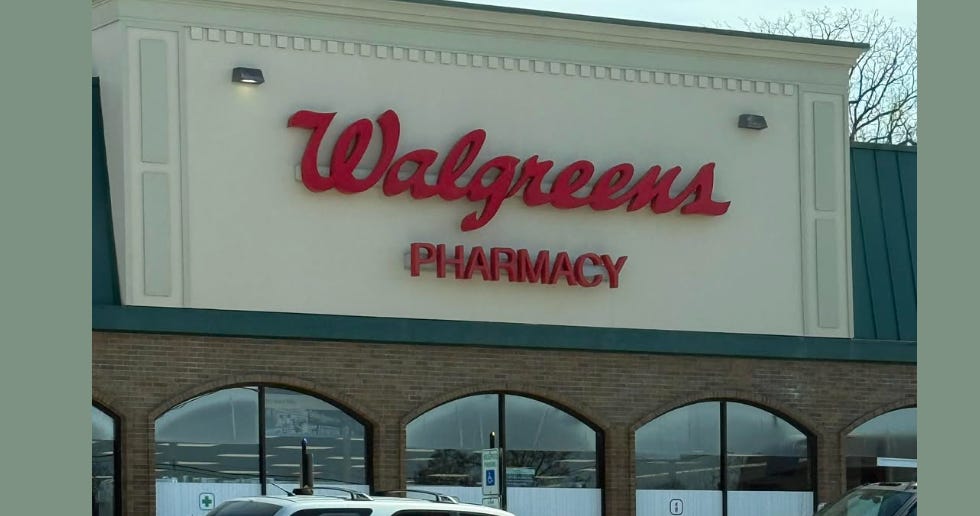Walgreens Dodges Blame in $500K Vermont Settlement—Shoppers Foot the Bill?
While the announcement is presented as a significant consumer protection victory, an analysis of the settlement’s context provides a more complete picture for Vermonters.
A Deeper Look at the Vermont Attorney General’s Announcement
On November 12, 2025, Vermont’s Attorney General (AG) announced a $500,000 settlement with Walgreens. The state alleged that the pharmacy chain had “charged customers more at the register than prices were advertised on shelves.” The AG’s press release noted this conduct continued “even after being told by state inspectors to correct the pricing inaccuracies.”
While the announcement is presented as a significant consumer protection victory, an analysis of the settlement’s context—including Vermont’s specific laws, Walgreens’s legal history, and the state’s own enforcement patterns—provides a more complete picture for Vermonters.
What Did Walgreens Do? Understanding the “416 Instances”
The AG’s office, based on data from the Agency of Agriculture’s Weights and Measures Program [12], cited “416 instances” of overcharging between 2018 and 2024. These errors were found across 60 Walgreens and Rite Aid stores, with a median overcharge of $1.92.
However, the press release omits the specific legal standard for a violation in Vermont. Under state law and agency policy [2, 3], a store fails an inspection if “overcharge errors [are] identified in more than two percent of the commodities reviewed.”
Inspectors typically check 50-100 items in an audit [14]. This 2% threshold means that finding just two incorrect prices in a 50-item sample (a 4% error rate) or three incorrect prices in a 100-item sample (a 3% error rate) is enough to trigger a violation.
Therefore, the “416 instances” are not 416 failed inspections. They represent the total number of individual items found to be priced incorrectly over a six-year period, across all 60 stores. This context reframes the issue from a massive, daily overcharging problem to one of chronic, low-level failure to meet Vermont’s strict 98% pricing accuracy standard.
A Familiar Story: The 2016 New York Settlement
A critical piece of context not included in the press release is that this is not the first time Walgreens has been penalized for this exact behavior.
In April 2016, Walgreens paid $500,000—the identical settlement amount—to the New York Attorney General [4]. The allegations were also identical: “overcharging customers compared to the prices displayed” and using misleading shelf tags [4, 5]. That 2016 settlement also required Walgreens to implement new compliance policies and training [21].
The Vermont investigation covers the period after that New York settlement (2018-2024). This indicates that the previous penalty and corrective actions failed to ensure long-term, national compliance, suggesting such fines may be treated as a recurring “cost of business” rather than an effective deterrent.
Putting the $500,000 Fine in Perspective
The significance of the $500,000 penalty depends entirely on who you are.
For Walgreens: This amount is a rounding error. The company faces a national opioid settlement framework of up to $4.95 billion [8] and has settled prescription-billing fraud cases for hundreds of millions of dollars [9, 10]. In this broader legal landscape, a $500,000 fine for shelf-tag errors is not a material financial event.
For the Vermont AG’s Office: This single settlement is a major victory. The AG’s Public Protection Division (which includes the Consumer Protection Unit) reported recovering approximately $1.85 million total from over 40 cases in Fiscal Years 2021-2022 [11]. This one $500,000 settlement represents 27% of that entire two-year recovery total. The triumphant tone of the press release is best understood from this perspective: it is a significant win for the state’s enforcement unit.
Misaligned Penalties in Vermont?
This new settlement creates a jarring comparison when viewed against other recent state enforcement actions against Walgreens.
November 2025 Settlement (Pricing): $500,000 for retail pricing errors with a median overcharge of $1.92.
January 2024 Settlement (Patient Safety): $275,000 paid to the Vermont Secretary of State to resolve allegations of “untenable working conditions,” “medication and vaccination errors,” and unexpected store closures [6, 20].
This comparison shows the state has secured a penalty for pricing errors that is 81% higher than the penalty it secured for allegations involving patient health and safety.
Other Key Details
Two other details from the analysis are important for an informed opinion:
No Admission of Guilt: The press release does not state that Walgreens admitted to any wrongdoing. In the $275,000 settlement over pharmacy conditions, Walgreens explicitly stated it “disputes the accuracy of the state’s allegations and admits no liability” [6]. It is standard practice for such settlements to include a “no admission of liability” clause, and it is virtually certain this one does, too.
The Burlington Grant: The settlement directs $25,000 of the fine to the Community Health Center of Burlington (CHCB) [17]. This is a notable detail, as the CHCB itself recently agreed to pay $26,061.75 to the U.S. Department of Health and Human Services to resolve allegations that it had employed an individual excluded from federal health programs [19]. The near-identical amount of the state’s grant and the center’s federal fine is a striking coincidence.
What Happens Next
According to the settlement terms announced by the Attorney General:
Walgreens must pay the $500,000 penalty, including the $25,000 contribution to the CHCB.
The company must report any changes to its pricing compliance policies to the Attorney General’s Office for the next three years.
Walgreens is now required to self-report to the AG any future internal audits that find an overcharge error rate of more than two percent at any one store.
Given the company’s history, the key question for Vermonters is whether this $500,000 settlement and its new reporting requirements will finally secure permanent pricing accuracy, or if this is a problem that will persist.



